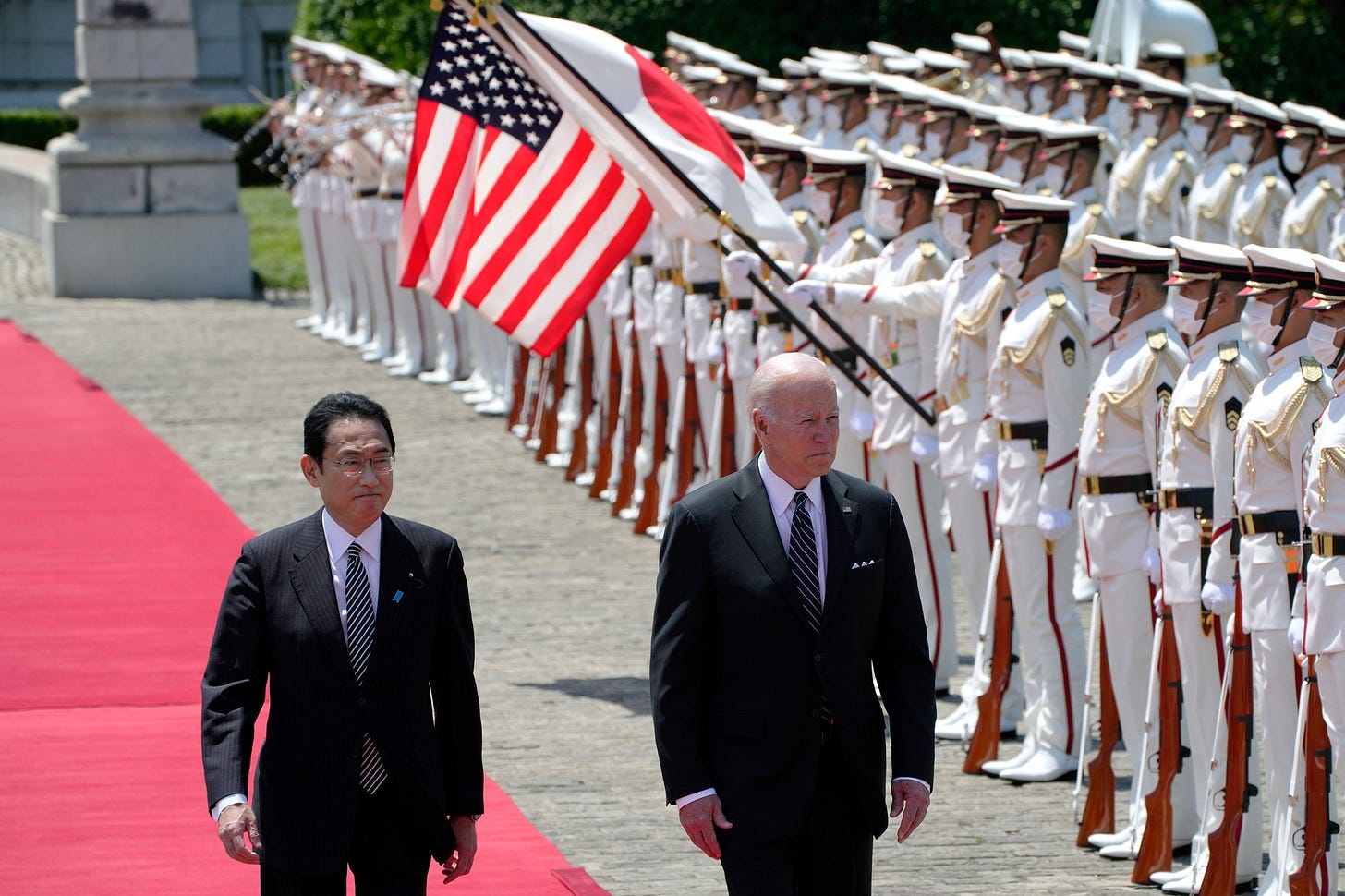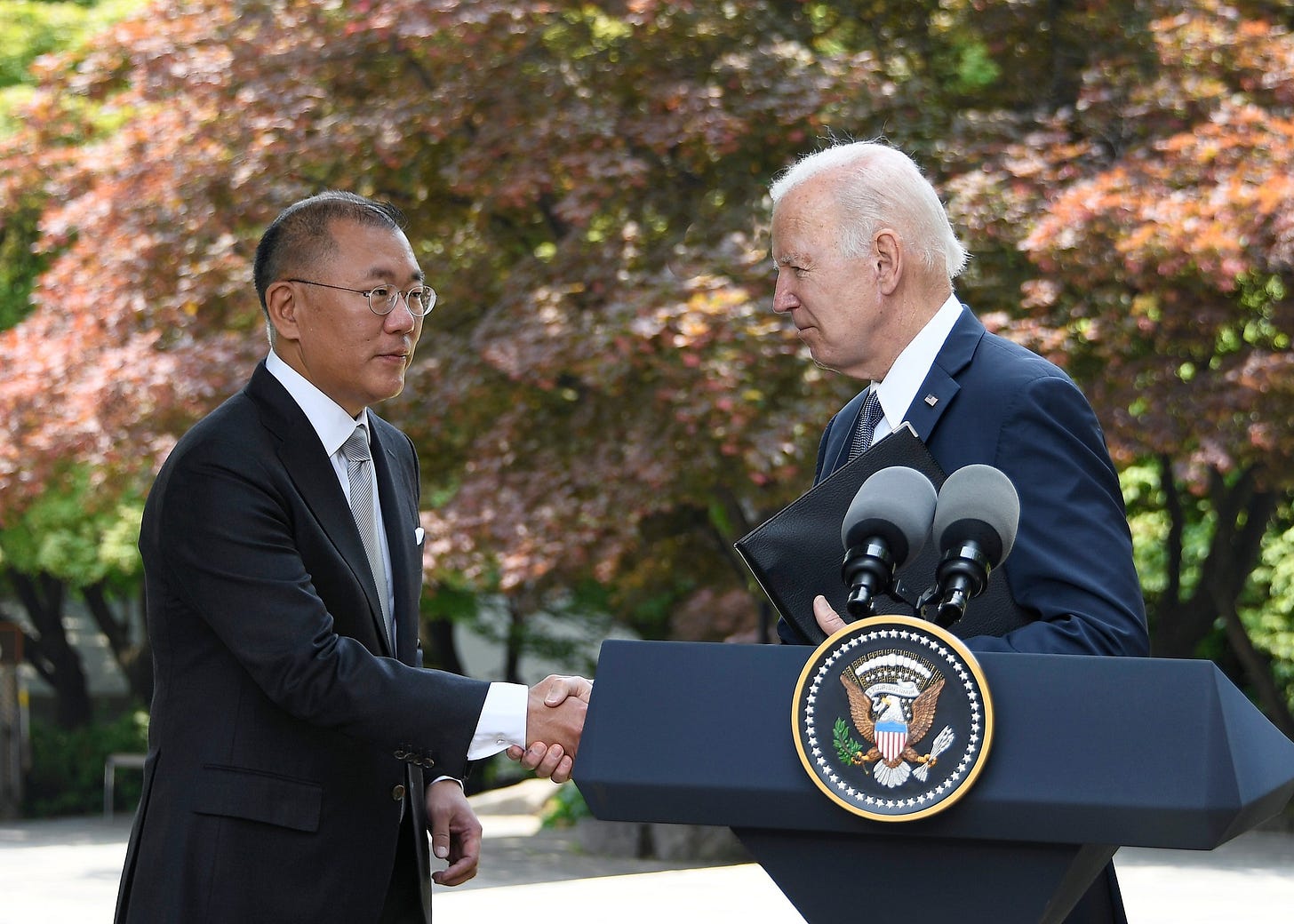More chips, batteries, and EVs- Off to Asia
POTUS’s first stop on Asia trip is with tech companies

President Joe Biden is dealing with inflation and US gun laws after 21 were killed in an elementary school shooting in Uvalde, Texas. The two issues quickly overshadowed his attempt to restart the “pivot to Asia,” which began while he was Vice President to Barack Obama. There are a lot of implications for the transpiration transformation.
FIRST STOP
Did you notice on Biden’s trip to Asia that he started in South Korea? Did you take note of the first thing he did? It wasn’t a bilateral meeting with political leaders. Biden went to the Samsung factory.

Samsung's first semiconductor which was made in 1974. (Credit: Samsung)
The US President was there to thank Samsung, and enrich the relationship with the company, which has promised to invest up to $17 billion in a computer chip plant in Texas. Biden pointed out that the factory he was visiting is the prototype for the one to be built in Texas.
President Joe Biden speaking at the Samsung semiconductor plant in South Korea in May. (Credit: White House)
It was off to the Hyundai plant where the President again thanked an Asian company for investing in America. Hyundai plans to spend $5.5 billion to construct a plant to build electric vehicles in Georgia. Hyundai says it will build vehicles and batteries. The company hopes to break ground next year and produce vehicles by 2025. It hopes the plant will churn out 300,000 vehicles a year.
IT'S ABOUT SUPPLY CHAINS
The President’s priorities on his Asia trip say a lot about what he hopes to accomplish at home. The administration is trying to bring supply chains home. In the interim, and for the long term, the plan is to reduce supply chain business with competitors (think China) while increasing ties with friends (think South Korea).
President Biden spoke about supply chains at the Hyundai plant. (Credit: White House)
The President made this clear as he came to the microphone at a news conference at the Hyundai event. Mr. Biden bluntly said the US wants to, “secure more of what we need from our allies and partners, and bolster our supply-chain resilience.”
INDO-PACIFIC ECONOMIC FRAMEWORK FOR PROSPERITY
The pivot to Asia by the US is related to national security and to the economics the President was referring to. The White House is hoping to corral Asian states into an economic circle. This is a replacement of the Trans Pacific Partnership which was abandoned by the previous administration.

Welcoming ceremony in Tokyo for President Biden during his tour of Asia in May. (Credit: Getty Images)
“So much of the future of the world is going to be written here, in the Indo-Paciifc, over the next several decades,” the President said at the Samsung event. That is a nod to the fact that the US may not be able to supply its entire market with its domestic and legacy automakers.

President Biden welcomed to Hyundai by Euisun Chung, Executive Chair of Hyundai. (Credit: Hyundai)
Hyundai says, "This new EV plant is the future of our business, and It will help us meet the growing demands of our US customers who want leading-edge design, safe, zero-emissions vehicles now and in the future.”
While the Biden Administration has programs and plans to rebuild supply chains and domestic manufacturing, it won’t be a straight-line. The US will need to be in business with its friends, it says, to create new factories and manufacturing of EVs, batteries, and chips to fuel the next era of transportation.
We are in a decade of Transportation Transformation. That's what Full Throttle explores. The newsletter will be delivered twice a week for free once you subscribe here. Follow me on Twitter, Instagram, and Linkedin.
(Cover photo credit of Biden visiting Samsung factory: Getty Images)




